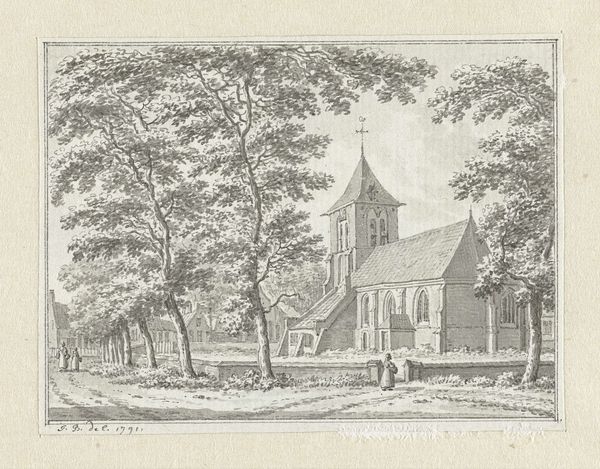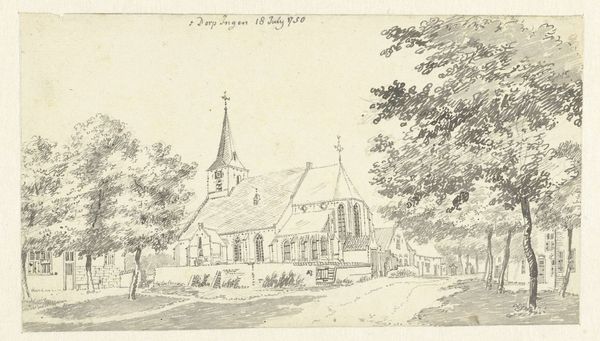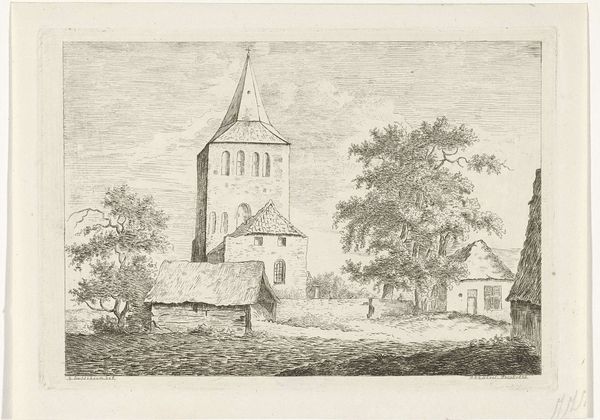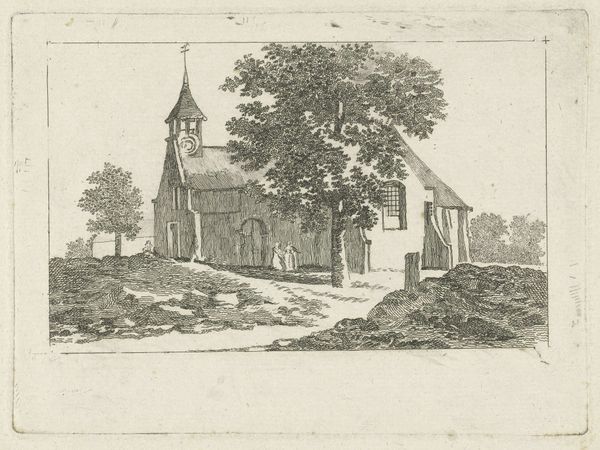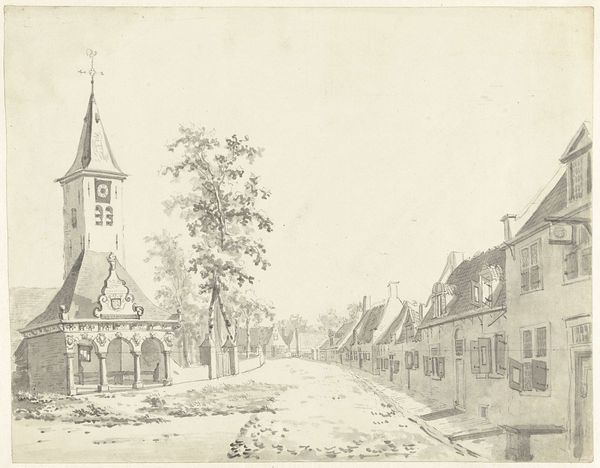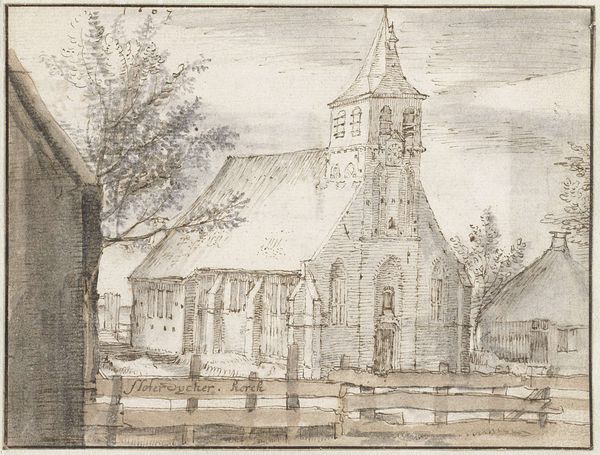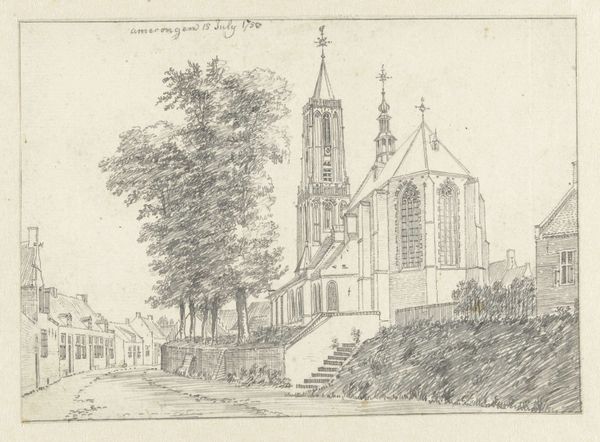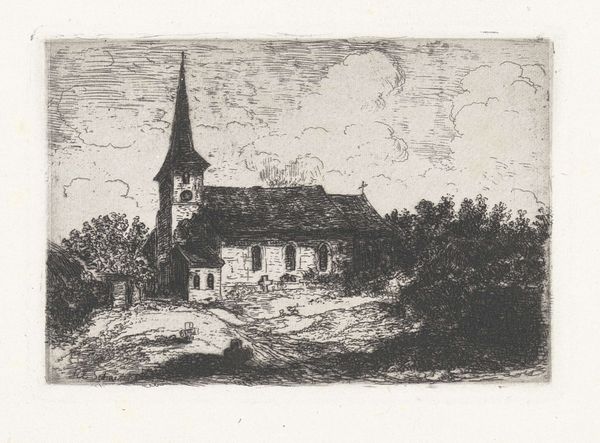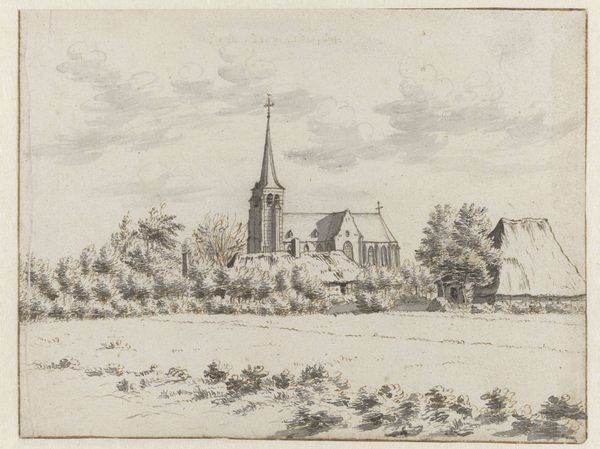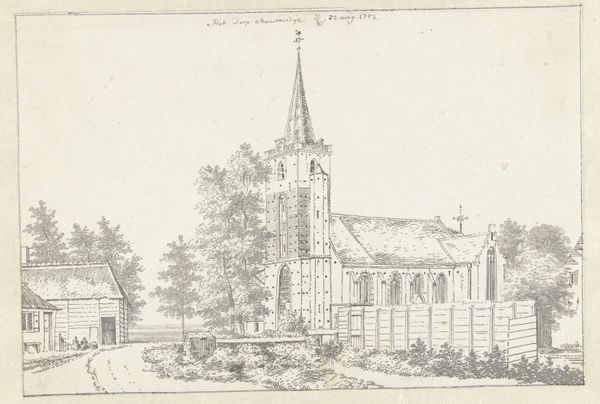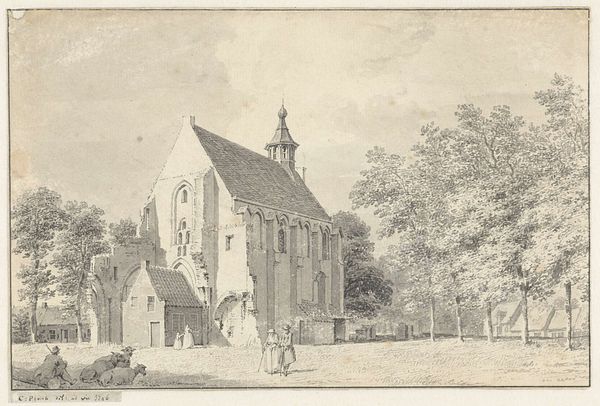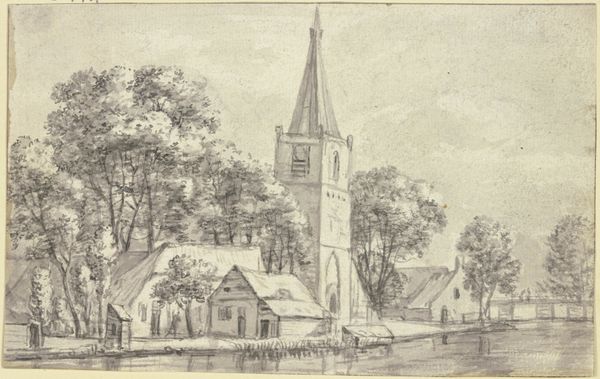
drawing, ink
#
pen and ink
#
landscape illustration sketch
#
drawing
#
pen drawing
#
dutch-golden-age
#
mechanical pen drawing
#
pen illustration
#
pen sketch
#
old engraving style
#
landscape
#
ink
#
pen-ink sketch
#
pen work
#
genre-painting
#
initial sketch
Dimensions: height 284 mm, width 367 mm
Copyright: Rijks Museum: Open Domain
Editor: This drawing, "De kerk te Schore, op Zuid-Beveland," is attributed to an anonymous artist, made sometime between 1700 and 1800 using pen and ink. It gives a very serene, almost dreamlike impression of the landscape. How do you interpret this work? Curator: The dreamlike quality you note is intriguing, isn’t it? Consider that while seemingly a simple landscape, the image captures a specific place – a church. In the 18th century, the church held immense social and political power. This work could be seen as an early form of spatial justice representation. How does this portrayal of religious architecture within its natural setting make you think about its social context? Editor: That's fascinating. I hadn't thought about the power dynamics at play. It almost makes the scene seem more intentional, like it's trying to convey a message about the church's presence in the community. Do you think the choice of such simple materials plays a role in this? Curator: Absolutely. Pen and ink lend themselves to accessibility. This wasn’t a commission destined for a wealthy patron, but a possibly accessible artwork portraying an accessible message. The delicate rendering, contrasted with the implied authority of the church, creates tension. Editor: So the medium reinforces the message. Now I am looking at the landscape with different eyes! Curator: Indeed. It prompts us to think about whose perspective is represented, what stories are being told or erased, and how power manifests visually in even the most tranquil scenes. How might a contemporary artist depict this same scene? Editor: Someone today would probably emphasize those tensions. I wonder how artists use landscapes now to address power. Curator: It's a continuous dialogue, and recognizing those historical layers enriches our understanding of the present.
Comments
No comments
Be the first to comment and join the conversation on the ultimate creative platform.
